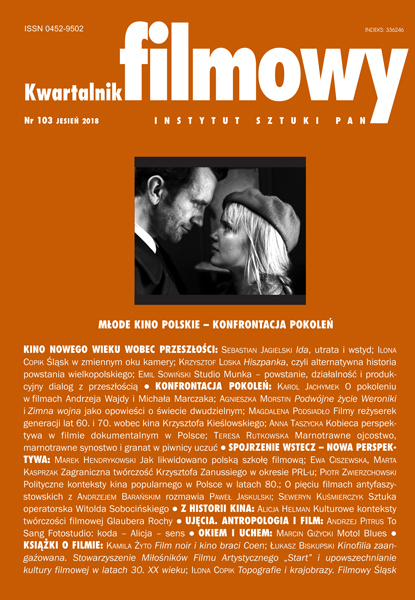Kieślowski versus Pawlikowski. „Podwójne życie Weroniki” i „Zimna wojna” jako opowieści o świecie dwudzielnym
Kieślowski Versus Pawlikowski. “The Double Life of Veronique” and “Cold War” as Tales of Bipartite World
Author(s): Agnieszka MorstinSubject(s): Fine Arts / Performing Arts, Visual Arts, Film / Cinema / Cinematography
Published by: Instytut Sztuki Polskiej Akademii Nauk
Keywords: Krzysztof Kieślowski;Paweł Pawlikowski;Polish cinema;
Summary/Abstract: What was the “Kieślowski phenomenon” at the beginning of the 1990s, and what is the “Pawlikowski phenomenon” today, 28 years later? What links these two examples of success of Polish cinema in the West, and how are they different from each other? While Paweł Pawlikowski aestheticized the communist period in the “Cold War”, Krzysztof Kieślowski showed the last moments of this system in “The Double Life of Veronique”. This film, watched today, reveals a dimension not so much metaphysical as cultural, and is an interesting artistic text in mental geography. That is why Morstin in her text focuses on the bipartite world presented in “The Double Life of Veronique” and the “Cold War”. Pawlikowski takes the opposite direction to Kieślowski in his later films, because as the maker of the “Cold War”, he turns from the West to the East, which for him is an invariable source of inspiration. The author tries to describe two creative strategies of confrontation with the West as a mental space with which both of the film directors deals in their own way. For this purpose, she interprets “The Double Life of Veronique” and the “Cold War” as films whose heroes on the Eastern, Polish side experience sacrifice, death and sacrum, while on the Western side – freedom, success, but also frustration, longing and loneliness. In both films, music is a pass to a better world, a kind of means in the ritual of transition from East to West of Europe.
Journal: Kwartalnik Filmowy
- Issue Year: 2018
- Issue No: 103
- Page Range: 79-90
- Page Count: 12
- Language: Polish

